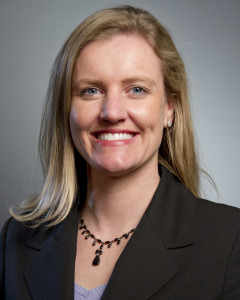by Puikei Cheng
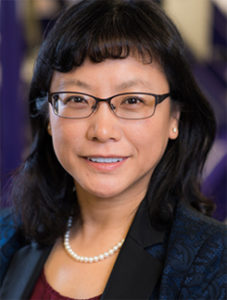 If you’re reading this article, whether on a screen or in print, you are using a product of manufacturing. Manufacturing converts raw materials into consumer goods—and due to mass production, more consumer goods are manufactured than ever before.
If you’re reading this article, whether on a screen or in print, you are using a product of manufacturing. Manufacturing converts raw materials into consumer goods—and due to mass production, more consumer goods are manufactured than ever before.
While mass production is cheap, there is growing demand for products that are complex, one-of-a-kind, or require special processing. These products include specialized equipment such as turbines, aircraft parts, and patient-specific implants. With the proliferation of interconnected electronic devices, manufacturing research has grown extremely sophisticated, multidisciplinary, and collaborative. At the forefront of this research is Professor Jian Cao.
Dr. Jian Cao is the Cardiss Collins Professor of Mechanical Engineering at Northwestern University in Evanston, Illinois. She co-directs the Advanced Manufacturing Processes Laboratory and is the founding director of the Northwestern Initiative for Manufacturing Science and Innovation. Moreover, she has been recognized through numerous awards, published over a hundred journal articles, and holds over a dozen patents. She was first woman president of the North American Manufacturing Research Institute since its founding over 30 years ago. Last year, she became the first woman to win the prestigious SME Frederick W. Taylor Research Medal for her contributions to the field of manufacturing.
Manufacturing as integration of knowledge
Dr. Cao first became interested in manufacturing as a student at Shanghai JiaoTong University (SJTU). She was drawn to the idea of manufacturing as the “integration of many different fields.” As she explains, “A process by itself is not going to fly until it’s in the system domain.” She graduated from SJTU with a double major in controls and materials science/engineering, then went on to earn a PhD at MIT in solid mechanics.
More than 20 years later, her research contributions cover topics as wide-ranging as 3D printing, carbon fiber composites processing, sheet metal forming, and surface texturing. Dr. Cao’s research pushes the boundaries of these advanced manufacturing techniques to reduce cost and waste, increase efficiency, improve process flexibility, and boost product quality.
Dr. Cao advocates for breadth and perspective in research. She has worked in all three sectors of the “Triple Helix”: academia, industry, and government agency. Speaking about her time as a program director at the National Science Foundation, she says, “You’re taking yourself away from being fully embedded in your own lab and looking over a much broader landscape. I visited many different labs, domestic and international, sat on many different panels and workshops, and worked with people to come up with something new—new ideas and new directions for the manufacturing community.”
Now in her fifth year as Associate Vice President for Research at Northwestern, Dr. Cao uses her perspective to influence university operations. “As a researcher, you know what you need—and the office of research wants to know how to support researchers.” She oversees university-wide research initiatives regarding Northwestern’s core facilities, including machine shops and software licenses.
Dr. Cao is also an entrepreneur. Her start-up, Scimplicity LLC, aims to bring rapid, low-volume sheet metal forming to the market via an advanced manufacturing process known as incremental forming. Compared to traditional sheet metal forming processes, incremental forming is flexible, cheap, and fast for low volume production—perfect for specialized equipment.
According to Dr. Cao, Scimplicity is a combination of the “sci” in science and the idea of “simplicity” as a design objective. “Development usually moves from the simple to the complex. But for everyone to be able to use it, you have to simplify the complex knowledge.” Scimplicity does this by condensing cutting-edge, multidisciplinary manufacturing technology into a more user-friendly interface. “The whole concept is to make it into a simple system that people can use.”
Manufacturing as a collaborative effort
Around the lab, Dr. Cao is known for her ability to multitask. On airplanes and car rides you may find her editing manuscripts, writing proposals, and calling into teleconferences—sometimes all at once. Outside the lab, she is a proud mother of two Northwestern engineering undergraduates, a junior and an incoming freshman. With her busy schedule, she still manages to mentor her diverse crew of twenty-plus post-docs, graduate students, and undergrads.
Cooperation is key in Dr. Cao’s group. Her students often work together on multidisciplinary teams assembled for each project. For example, about a quarter of her students have spent time in the last two years either designing, building, or testing their latest metal 3D printer system. Such a project demands a variety of skills and fields of knowledge.
Dr. Cao takes a similar approach with her collaborators, who span the globe. Her strong ties to the academia-industry-government “Triple Helix” aligns her with experts in experimental design, machine design, controls, simulations, materials science, imaging, and more. She has worked with companies both big and small, including Ford, Boeing, Baxter, General Electric, and Siemens. With her academic and industrial partners, she has secured millions of dollars in grants to spur innovative research.
At the core, Dr. Cao believes her achievements came about because she does what she enjoys. “I think you really have to find your own passion. You have probably heard a lot of people say that you have to find your own passion. But it is true. If you don’t like what you do, then don’t do it. Life is short, find something interesting—and work on it.”
To learn more about Professor Jian Cao’s research, visit ampl.mech.northwestern.edu.

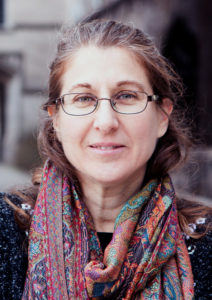 I still remember the first time I encountered Dr. Jocelyn Malamy, Associate Professor in the Department of Molecular Genetics and Cell Biology at the University of Chicago. She was giving the final set of lectures in one of the toughest classes I took my first year of graduate school. Immediately, I was struck by her enthusiasm and vigor, not only for plant biology, but also for the task at hand—teaching. Jocelyn is a past recipient of the Llewellyn John and Harriet Manchester Quantrell Award for Excellence in Undergraduate Teaching, which is no surprise for anyone who’s ever taken one of her classes. She feels that University of Chicago students are a “really gratifying group to work with, because you provide them good exciting things, and then they become excited.” This attitude was definitely reflected in her lectures for that course, which consistently engaged the audience in a way that many educators strive for their whole careers.
I still remember the first time I encountered Dr. Jocelyn Malamy, Associate Professor in the Department of Molecular Genetics and Cell Biology at the University of Chicago. She was giving the final set of lectures in one of the toughest classes I took my first year of graduate school. Immediately, I was struck by her enthusiasm and vigor, not only for plant biology, but also for the task at hand—teaching. Jocelyn is a past recipient of the Llewellyn John and Harriet Manchester Quantrell Award for Excellence in Undergraduate Teaching, which is no surprise for anyone who’s ever taken one of her classes. She feels that University of Chicago students are a “really gratifying group to work with, because you provide them good exciting things, and then they become excited.” This attitude was definitely reflected in her lectures for that course, which consistently engaged the audience in a way that many educators strive for their whole careers.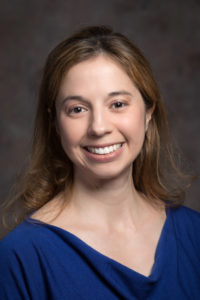 Dr. Laura Thorp, Physical Therapist turned Anatomist and now mom of four boys under the age of 5, is highly regarded as an educator by her students. In fact, she has been awarded on several occasions for Excellence in Teaching and having been one of her students, I can personally endorse her merit for these awards. I first met Dr. Thorp at Rush University Medical Center when she was an Assistant Professor of Anatomy and Cell Biology. As an aspiring professor of anatomy myself, I have always viewed Dr. Thorp as an important mentor and role model.
Dr. Laura Thorp, Physical Therapist turned Anatomist and now mom of four boys under the age of 5, is highly regarded as an educator by her students. In fact, she has been awarded on several occasions for Excellence in Teaching and having been one of her students, I can personally endorse her merit for these awards. I first met Dr. Thorp at Rush University Medical Center when she was an Assistant Professor of Anatomy and Cell Biology. As an aspiring professor of anatomy myself, I have always viewed Dr. Thorp as an important mentor and role model.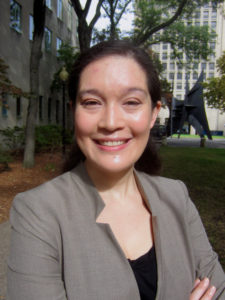 If you pause and consider your surroundings, you will find that a type of molecule, called a polymer, surrounds you. Polymers are large molecules that are made up of smaller molecules, called monomers. Monomers link together to form a polymer much in the same way that a necklace is made up of beads (discrete, repeating units).
If you pause and consider your surroundings, you will find that a type of molecule, called a polymer, surrounds you. Polymers are large molecules that are made up of smaller molecules, called monomers. Monomers link together to form a polymer much in the same way that a necklace is made up of beads (discrete, repeating units).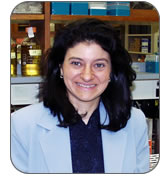 “Perseverance is something that pays back,” Dr. Anna Spagnoli told me a little after noon on a Monday in Chicago. Dr. Spagnoli currently holds the positions of Professor of Pediatrics and Women’s Board Chair of Pediatrics at Rush Children’s Hospital at Rush University Medical Center. Dr. Spagnoli seemed particularly busy as she was preparing for a visiting professorship in China later in the week.
“Perseverance is something that pays back,” Dr. Anna Spagnoli told me a little after noon on a Monday in Chicago. Dr. Spagnoli currently holds the positions of Professor of Pediatrics and Women’s Board Chair of Pediatrics at Rush Children’s Hospital at Rush University Medical Center. Dr. Spagnoli seemed particularly busy as she was preparing for a visiting professorship in China later in the week.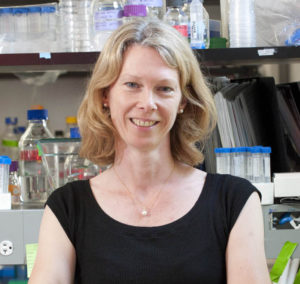 ce’s
ce’s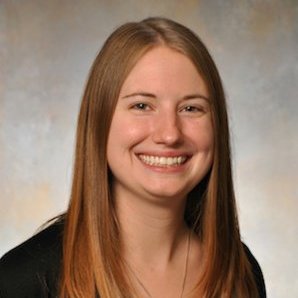 If you find Christiane Carney on a typical day, she’s likely to be training medical practitioners, brushing up on scientific literature, or interacting with key opinion leaders in women’s health. Christiane is a medical science liaison (MSL), an increasingly popular profession among PhD scientists. MSLs typically work for pharmaceutical companies, acting as a scientific resource for the medical community. In summary, “You are a scientific expert on your company’s products, answering scientific and clinical questions for doctors and nurses.” This requires in-depth knowledge of a particular therapeutic area, in addition to strong verbal communication skills. As for Christiane, her specialty is women’s health. She has long been passionate about her field, and finds that being an MSL allows her to make a unique and tangible impact on patient lives and outcomes.
If you find Christiane Carney on a typical day, she’s likely to be training medical practitioners, brushing up on scientific literature, or interacting with key opinion leaders in women’s health. Christiane is a medical science liaison (MSL), an increasingly popular profession among PhD scientists. MSLs typically work for pharmaceutical companies, acting as a scientific resource for the medical community. In summary, “You are a scientific expert on your company’s products, answering scientific and clinical questions for doctors and nurses.” This requires in-depth knowledge of a particular therapeutic area, in addition to strong verbal communication skills. As for Christiane, her specialty is women’s health. She has long been passionate about her field, and finds that being an MSL allows her to make a unique and tangible impact on patient lives and outcomes.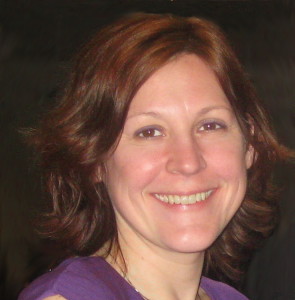 For more than a decade Kelly Fahrbach successfully paved her biomedical research career in academic settings – all went well, but something was missing. At the time, Kelly was a young research assistant professor and admitted that she needed more variety, more dynamic in her everyday schedule, which pushed her to switch her professional path. She now enjoys working as a medical writer at Stem Scientific that is part of Ashfield Healthcare Communications.
For more than a decade Kelly Fahrbach successfully paved her biomedical research career in academic settings – all went well, but something was missing. At the time, Kelly was a young research assistant professor and admitted that she needed more variety, more dynamic in her everyday schedule, which pushed her to switch her professional path. She now enjoys working as a medical writer at Stem Scientific that is part of Ashfield Healthcare Communications.